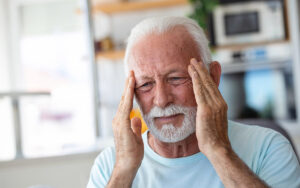Exploring causes, symptoms, and the latest therapies that bring real relief.
Millions of people experience the irritation, burning, and blurred vision caused by dry eye syndrome, yet far too many try to “push through” the discomfort with over-the-counter drops or by ignoring the symptoms altogether. What many don’t realize is that dry eye isn’t just a nuisance — it’s a medical condition that, if left untreated, can significantly affect vision and daily life.
At Anaheim Eye, we see dry eye patients every day, ranging from office workers who spend hours in front of screens to older adults struggling with age-related tear deficiencies. The encouraging news is that today’s treatments go far beyond artificial tears. With advanced medications, in-office therapies, and lifestyle changes, patients can finally find solutions that target the cause of their dry eyes instead of just covering up the symptoms.
This guide dives into what dry eye really is, why it happens, and which treatments actually make a difference.
“Dry eyes aren’t just uncomfortable — they can interfere with vision, sleep, and your quality of life.”
What Exactly Is Dry Eye Syndrome?
Dry eye syndrome occurs when your eyes do not produce enough tears, or when the tears produced are poor quality and evaporate too quickly. Tears are not just water — they are a complex mixture of water, oils, and mucus that work together to lubricate, protect, and nourish the surface of the eye.
When that system is disrupted, the result is irritation, inflammation, and even damage to the corneal surface. For some, the sensation feels like a constant gritty texture under the eyelids. For others, it shows up as intermittent blurriness that clears only after blinking. The condition can be mild and occasional or chronic and severe.
Symptoms include persistent stinging or burning, sensitivity to light, watery eyes (ironically caused by the eye overproducing tears in response to dryness), and trouble wearing contact lenses. Over time, untreated dry eye can even make daily activities like reading or driving uncomfortable.
Why Does Dry Eye Happen?
There isn’t one single cause of dry eye — it is usually the result of multiple overlapping factors. Age is one of the biggest contributors, since tear production naturally declines as we get older. Hormonal changes, particularly in women during menopause, also play a role.
The modern lifestyle has added new triggers. Hours spent staring at digital screens reduce blinking rates, which means tears evaporate more quickly. Air conditioning, heating, wind, and smoke can dry out the eyes further.
Medications such as antihistamines, antidepressants, and certain blood pressure drugs are also known culprits, while health conditions like diabetes, rheumatoid arthritis, and thyroid disorders may reduce the body’s ability to produce healthy tears. Even contact lens wear, though common, can irritate the ocular surface over time.
At Anaheim Eye, we start by identifying the root causes in each patient. Dry eye isn’t the same for everyone, which is why a personalized approach to treatment is so important.
First-Line Relief: Lifestyle Adjustments That Make a Difference
For many patients, simple changes in daily habits provide noticeable relief. For instance, people who work on computers all day may not realize how infrequently they blink. The average person blinks about 15–20 times per minute, but during screen use, that rate drops by nearly half. Practicing the 20-20-20 rule—every 20 minutes, look at something 20 feet away for 20 seconds — can help keep eyes lubricated.
Environmental control also matters. Using a humidifier indoors during winter or in air-conditioned spaces can add moisture back into the air. Smoky or windy environments should be avoided whenever possible, and wraparound sunglasses can offer protection outdoors.
Even something as simple as staying hydrated can improve tear film stability. Dehydration can exacerbate dry eye symptoms, so regular water intake is an effortless yet often overlooked remedy.
Artificial Tears: Helpful but Limited
Most people with occasional dryness turn first to artificial tears, which are available over the counter in countless varieties. These lubricating drops add temporary moisture to the eye, soothing irritation and improving comfort. In 2025, preservative-free formulas are widely available, reducing the risk of irritation from frequent use.
While artificial tears can be helpful, they are not a cure. They don’t address inflammation, gland blockages, or poor tear quality. That’s why patients with persistent symptoms usually need additional treatments tailored to the underlying problem.
Prescription Medications for Long-Term Relief
When artificial tears aren’t enough, prescription medications can target the root causes of dry eye, particularly inflammation.
-
Cyclosporine (Restasis®): This medication reduces inflammation in the tear glands, allowing them to produce more natural tears over time. Results build gradually but can be long-lasting.
-
Lifitegrast (Xiidra®): Works by blocking inflammatory pathways in the eye surface, reducing irritation and improving tear quality. Many patients notice improvements within weeks.
-
Varenicline nasal spray (Tyrvaya®): A newer option that stimulates nerves in the nasal cavity to activate tear production naturally. For patients frustrated with drops, this non-invasive spray provides an innovative alternative.
These therapies don’t just mask symptoms — they actually improve the underlying tear film, providing sustained comfort.
The Role of Nutrition and Lifestyle in Dry Eye
Diet plays a surprisingly important role in managing dry eyes. Omega-3 fatty acids, found in foods like salmon, flaxseeds, and walnuts, have been shown to reduce inflammation and improve the quality of oils in the tear film. Supplements can also help if dietary intake is low.
Antioxidants such as vitamins A, C, and E support eye tissue health, while avoiding excessive alcohol and caffeine can reduce dehydration. Smoking, a known irritant, significantly worsens dry eye and should be avoided.
At Anaheim Eye, we often combine nutritional counseling with medical treatments for a more holistic approach to care.
FAQs About Dry Eye
Is dry eye a permanent condition?
For many people, dry eye is chronic, but with the right treatment, it can be managed successfully. Some patients experience long-lasting relief, while others need ongoing maintenance.
Will I always need to use drops?
Not necessarily. Patients who undergo procedures like LipiFlow or receive prescription medications often find they need artificial tears less frequently.
Can dry eye damage my vision permanently?
If left untreated, severe dry eye can damage the cornea and increase the risk of infection. That’s why timely treatment is so important.
Is dry eye more common as I age?
Yes. Tear production decreases naturally with age, which is why dry eye is more common in older adults — especially women.
The Anaheim Eye Difference
At Anaheim Eye, we know that every dry eye case is different. Some patients struggle with evaporation due to gland blockages, while others don’t produce enough tears in the first place. That’s why our approach begins with a comprehensive dry eye evaluation, using tools that measure tear volume, tear film stability, and gland health.
Our personalized care means we don’t just hand you a bottle of drops. We create a treatment plan that may include medication, in-office procedures, lifestyle guidance, and long-term monitoring. The result? Patients finally find the relief they previously thought wasn’t possible.
“Our mission isn’t just to treat dry eye — it’s to restore comfort and confidence in daily life.
Conclusion
Dry eye syndrome can feel frustrating, even overwhelming, when it interferes with work, reading, or simply enjoying a day outdoors. But with today’s advanced treatments, relief is possible. From targeted medications and innovative therapies to nutrition and preventive care, patients now have a wide range of options that actually work.
At Anaheim Eye, we specialize in diagnosing the root causes of dry eye and delivering solutions that restore comfort, protect vision, and improve quality of life. Contact us today to schedule your comprehensive evaluation and start your journey to clearer, more comfortable eyes.




